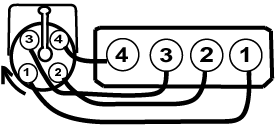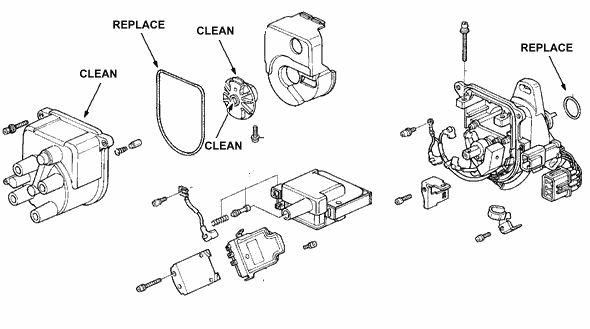- The car won't start on rainy days. Check inside the distributor cap for dampness. If you find moisture, get some carburetor cleaners or solvents from your service station — the kind they used to clean car parts. To evaporate any dampness inside the distributor cap, turn the cap upside down and spray some solvent into it. Swish it around and pour it out. Then dry the cap as best you can with a clean, lint-free towel. If you find moisture the problem is usually a crack cap or a bad seal.
- The dust inside the distributor can also conduct spark. Clean out the red dust
using only clean solvent. Gasoline won't do because a spark can ignite gasoline fumes and cause an explosion or a fire.
- The genuine distributor cap seal (the thing that looks like a large rubber
band on the picture above) is about a dollar more and last much longer
than an aftermarket one. You might want to replace it when the seal feels stiff, cracking or flattened. Use a rag to wipe out the moisture
from inside the cap.
- Remove the spark plug wire from the socket and apply a small amount of
dielectric tune up grease to the insulator, apply some to the distributor cap where there are gaps.
Use your finger to spread the dielectric grease around the ceramic portion of the spark plug to help maintain a dry environment for the plugs. If you need help go here.
http://www.techguys.ca/howto/spark_plugs.html
- Disconnect the spark plug leads one at a time to avoid forgetting where
they go. Wipe with lint-free rag or paper towel. Wipe the top of each spark plug before refitting
the lead.


Second generation Honda Civic Third generation Honda Civic
- Wipe moisture from top of ignition coil.
- Replace the distributor cap (fixed with screws) and wipe the outside of the cap.
- If possible, spray the whole ignition system with a moisture repellent aerosol. Something like WD40.
- For the paranoid, you can spray a silicone film on the plug wires and cap to keep the moisture out.
